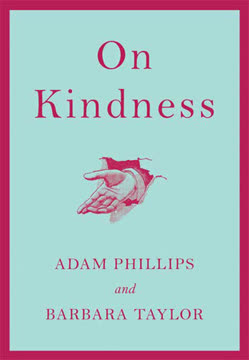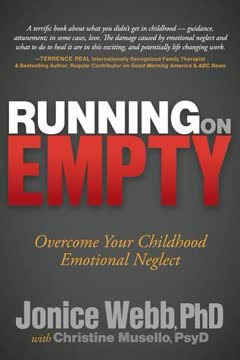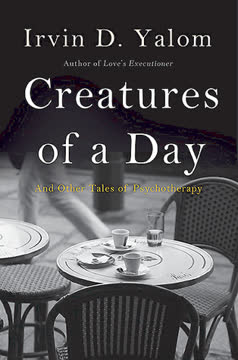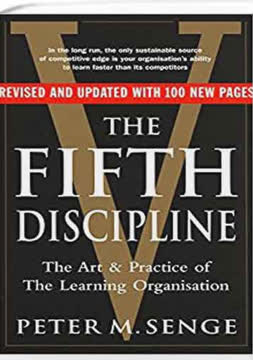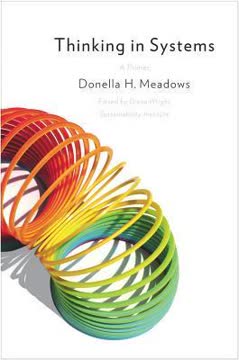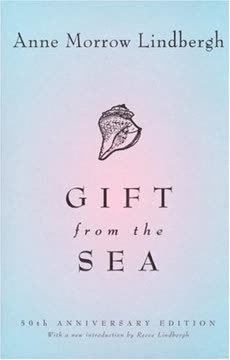Key Takeaways
1. Kindness is a Forbidden Pleasure in Modern Society
Kindness, we will argue in this book—not sexuality, not violence, not money—has become our forbidden pleasure.
Astonishment at Kindness. In contemporary society, acts of kindness often elicit surprise, as if they are deviations from the norm. Media coverage highlights instances of generosity as exceptional, reinforcing the perception that self-focused behavior is more typical. This astonishment reveals a deep-seated belief that humans are inherently selfish, making genuine kindness seem almost unbelievable.
The Corny Factor. Stories about kindness are often presented in a trivializing or sentimental manner, further diminishing their significance. This trivialization reflects a broader cultural discomfort with genuine displays of empathy and compassion. The media often portrays kindness as naive or unrealistic, contributing to the perception that it is out of touch with the "real world."
Reclaiming Kindness. The authors argue that kindness, not sexuality or wealth, has become a forbidden pleasure in modern society. This is because kindness requires vulnerability and a willingness to connect with others, qualities that are often discouraged in a culture that prioritizes independence and self-reliance. Reclaiming kindness involves challenging the prevailing cynicism and recognizing the inherent value of empathy and compassion.
2. Historical Perspectives: Kindness as Kinship and Caritas
Kindness’s original meaning of kinship or sameness has stretched over time to encompass sentiments that today go by a wide variety of names—sympathy, generosity, altruism, benevolence, humanity, compassion, pity, empathy—and that in the past were known by other terms as well, notably philanthropia (love of mankind) and caritas (neighborly or brotherly love).
From Kinship to Compassion. The concept of kindness has evolved significantly throughout history. Originally rooted in kinship and shared identity, it has expanded to encompass a broader range of sentiments, including sympathy, generosity, and compassion. This evolution reflects a growing recognition of the interconnectedness of humanity.
Classical Ideals. Ancient philosophers, particularly the Stoics, emphasized the importance of kindness as a virtue. They believed that humans are naturally social beings with a capacity for empathy and compassion. Marcus Aurelius, for example, declared kindness as mankind's "greatest delight," highlighting its intrinsic value.
Christian Caritas. Christianity played a pivotal role in shaping Western attitudes toward kindness. The concept of caritas, or brotherly love, became a cornerstone of Christian ethics, emphasizing the importance of selfless service and compassion for others. This emphasis on caritas helped to foster a sense of community and social responsibility.
3. The Rise of Individualism and the Decline of Kindness
For most of Western history the dominant tradition of kindness has been Christianity, which sacralizes people’s generous instincts and makes them the basis of a universalist faith.
The Christian Foundation. For centuries, Christian caritas served as a cultural cement, binding individuals into society. The Christian rule "love thy neighbor as thyself" provided a moral framework for social interaction and emphasized the importance of empathy and compassion. This framework helped to foster a sense of community and shared responsibility.
The Hobbesian Shift. From the sixteenth century onward, the Christian emphasis on kindness came under increasing attack from competitive individualism. Thomas Hobbes's Leviathan (1651) dismissed Christian kindness as a psychological absurdity, arguing that humans are inherently selfish and motivated solely by self-interest. This marked a significant shift in Western thought.
The Modern Predicament. Two centuries later, Hobbes's view has become the dominant perspective. Kindly behavior is often viewed with suspicion, and public espousals of kindness are dismissed as moralistic or sentimental. This cynicism reflects a deep-seated belief that self-interest is the primary driver of human behavior, making genuine kindness seem almost impossible.
4. Psychoanalysis: Unpacking the Fear of Kindness
Psychoanalysis adds a link between the fate of kindness and sexuality, and through the consideration of sexuality provides a revised account of human aggression.
Kindness and Sexuality. Psychoanalysis explores the complex relationship between kindness and sexuality. It suggests that the very thing that draws people together (sexual desire) can also generate insupportable rivalries and antagonisms, making love and kindness casualties. This perspective highlights the inherent challenges of human connection.
The Fear of Kindness. Psychoanalysis delves into the reasons why people might resist their own kindness and the kindness of others. It suggests that fellow feeling, our imaginative capacity to identify with other people, may be the aspect of ourselves that we find the most disturbing. This fear stems from the vulnerability and potential for disappointment that come with genuine connection.
Beyond Moral Obligation. Psychoanalysis distinguishes between kindness as a moral obligation and kindness as a desire. When kindness is perceived as a duty, it can feel forced and inauthentic. However, when kindness arises from a genuine desire to connect with others, it becomes an irresistible force.
5. The Paradox of Kindness: Love, Hate, and Human Connection
Real kindness is an exchange with essentially unpredictable consequences.
Ambivalence and Jealousy. Human beings are profoundly ambivalent creatures, capable of both great kindness and great cruelty. Sexual jealousy, in particular, exposes the precariousness of our kindness, revealing how easily generosity can be undone by betrayal. This ambivalence highlights the inherent complexity of human relationships.
The Roots of Cruelty. Cruelty often stems from a desire to secure our emotional survival. The fundamental threat to our well-being is the loss of love, the threatened or actual loss of what our lives depend upon. Much of our cruelty is an attempt to restore or recover a state of things before this catastrophic disillusionment.
Kindness and Aggression. Psychoanalysis suggests that aggression can be a form of kindness. When aggression isn't driven by envy or revenge, it can contain the wish for a more intimate exchange, a profounder, more unsettling connection between people. This perspective challenges the traditional view of aggression as purely destructive.
6. The Kindness Instinct: Nature vs. Nurture
We have been in the habit of regarding the connection between the sexual instinct and the sexual object as more intimate than it in fact is.
The Child's Tenderness. Modern adults often view children's tenderness and natural kindness with suspicion. This suspicion reflects a broader cultural anxiety about the possibility of genuine kindness in a society that often seems to discourage it. Childhood has become the last bastion of kindness, the last place where we may find more love in the world than there appears to be.
Kindness as a Bribe. Small children often use kindness as a way to ensure that their parents meet their needs. They wish to save their parents from everything that makes them unhappy, from anything that might interfere with their caretaking. This kindness begins as a magical rescue or cure that invariably fails.
From Magical to Genuine. Out of the failure of magical kindness, genuine kindness can emerge. However, parents who recruit the child to save themselves, who punish the child when she cannot make the world a good place for them, may destroy the child’s belief in kindness. A society that romanticizes kindness, that regards it as a virtue so difficult to sustain that only the magically good can manage it, destroys people’s faith in real or ordinary kindness.
7. Modern Kindness: Reclaiming Fellow Feeling in a Selfish World
A sign of health in the mind is the ability of one individual to enter imaginatively and accurately into the thoughts and feelings and hopes and fears of another person; also to allow the other person to do the same to us.
The Illusion of Independence. Modern Western society often resists the fundamental truth that we are all dependent creatures. It values independence above all things, perceiving the need for others as a weakness. This emphasis on self-sufficiency can lead to a denial of our shared humanity.
The Welfare State Vision. The Beveridge/Tawney/Titmuss vision of a kindly society, with its emphasis on universal well-being and social responsibility, has been largely eroded in recent decades. Competitive individualism has become the ruling consensus, and the taboo surrounding dependency has grown stronger.
Beyond Customer Service. The commodification of care, with its emphasis on "empathy audits" and "compassion indexes," reflects a superficial understanding of kindness. Genuine kindness cannot be manufactured or imposed; it must arise from a genuine desire to connect with others and alleviate their suffering.
8. The Role of Vulnerability in Cultivating Kindness
Everybody is vulnerable at every stage of their lives; everybody is subject to illness, accident, personal tragedy, political and economic reality.
Shared Vulnerability. What we have in common is our vulnerability; it is the medium of contact between us, what we most fundamentally recognize in each other. Before we are sexual creatures, we are vulnerable creatures; indeed, the strength of our desires derives from our original helplessness and dependence.
The Trauma of Concern. The child's first, formative trauma is his growing acknowledgment of his need for others. The needy child experiences a trauma of concern ("How can I take care of my mother to ensure that she takes care of me?"), which calls up his natural kindness.
Turning Away from Kindness. This concern, and the later forms of kindness that emerge from it, is too easily turned away from. This turning away we call self-sufficiency, and when we want to pathologize it, we call it narcissism. The pleasure of kindness is that it connects us with others; but the terror of kindness is that it makes us too immediately aware of our own and other people’s vulnerabilities.
9. Beyond Sentimentality: A Robust Vision of Kindness
It is kind to see people as they are and not as one would like them to be.
Kindness and Hatred. It is only through hatred that relations between people move out of fantasy and into reality, into the possibility of actual exchange. Real kindness, real fellow feeling, entails hating and being hated—that is, really feeling available frustrations—and through this, coming to a more realistic relationship.
The Dangers of Sentimentality. Sentimentality is cruelty by other means. False, or magical, kindness distorts our perceptions of other people, often by sentimentalizing them, to avoid conflict. Sentimentality is a way of avoiding the difficult realities of human connection.
A Robust Kindness. A more robust version of kindness is made possible through frustration and hatred rather than a kindness organized to repudiate such feelings. Kindness of this variety allows for ambivalence and conflict while false, or magical, kindness distorts our perceptions of other people, often by sentimentalizing them, to avoid conflict.
Last updated:
FAQ
What is "On Kindness" by Adam Phillips and Barbara Taylor about?
- Explores the history and psychology of kindness: The book examines how kindness has been understood, valued, and practiced throughout Western history, from ancient philosophy to modern times.
- Investigates the decline of kindness: Phillips and Taylor analyze why kindness has become suspect or marginalized in contemporary society, often seen as weakness or naivety.
- Blends history and psychoanalysis: The authors combine historical analysis with psychoanalytic theory to explore the roots and fate of kindness in human development and culture.
- Argues for kindness as essential: The book contends that kindness is fundamental to human well-being and social connection, yet is often repressed or undervalued in modern life.
Why should I read "On Kindness" by Adam Phillips and Barbara Taylor?
- Challenges modern assumptions: The book questions the prevailing belief that humans are fundamentally selfish, offering a nuanced perspective on human nature.
- Offers historical insight: It provides a rich historical context for understanding how attitudes toward kindness have evolved, including the influence of religion, philosophy, and economics.
- Deepens psychological understanding: Through psychoanalytic insights, the book explores why people struggle with both giving and receiving kindness.
- Encourages self-reflection: Readers are prompted to reconsider their own attitudes toward kindness, vulnerability, and connection in personal and societal contexts.
What are the key takeaways from "On Kindness" by Adam Phillips and Barbara Taylor?
- Kindness is both natural and risky: While humans have an innate capacity for kindness, it exposes us to vulnerability and is often feared or avoided.
- Modern society undervalues kindness: Competitive individualism and suspicion of motives have made kindness seem outdated or even dangerous.
- Childhood is central: The book argues that children are naturally kind, but this instinct is often suppressed or distorted as they grow up in contemporary society.
- Kindness is complex and ambivalent: True kindness involves acknowledging both our own and others’ vulnerabilities, and is intertwined with aggression, desire, and ambivalence.
How do Adam Phillips and Barbara Taylor define "kindness" in "On Kindness"?
- Sympathetic identification: Kindness is described as an instinctive, sympathetic identification with the vulnerabilities and attractions of others.
- Open-heartedness: The authors use the Victorian term "open-heartedness" to capture the expansive, connecting quality of kindness.
- Not mere self-sacrifice: Unlike some religious or moral traditions, the book emphasizes that kindness is not about self-denial, but about mutual recognition and pleasure.
- A form of pleasure: Kindness is seen as a source of deep satisfaction and well-being, not just a moral duty.
What is the historical evolution of kindness according to "On Kindness"?
- Ancient roots: Kindness was central to Stoic and early Christian thought, seen as a natural human delight and a social glue.
- Christian transformation: Christianity universalized kindness (caritas), but also linked it to self-sacrifice and original sin, complicating its role.
- Enlightenment debates: Thinkers like Hobbes, Hume, Smith, and Rousseau debated whether kindness was natural or egoistic, with Rousseau emphasizing its roots in childhood.
- Modern decline: The rise of capitalism, individualism, and scientific skepticism led to the marginalization and feminization of kindness, often relegating it to women and children.
How does "On Kindness" by Adam Phillips and Barbara Taylor connect kindness to psychoanalysis?
- Kindness and childhood: The book draws on psychoanalytic theory to argue that kindness originates in early relationships, especially between parents and children.
- Ambivalence and aggression: Psychoanalysis reveals that kindness is intertwined with aggression, rivalry, and ambivalence, not simply pure or innocent.
- Kindness as a developmental challenge: Growing up involves both learning kindness and learning to manage the risks and frustrations it brings.
- The role of fantasy and reality: Psychoanalysis shows how magical or sentimentalized kindness can be a defense against real, complex relationships.
What is the "kindness instinct" as discussed in "On Kindness"?
- Innate but fragile: The authors suggest that humans have an instinct for kindness, but it is easily undermined by fear, trauma, or social pressures.
- Linked to vulnerability: The instinct for kindness is rooted in our shared vulnerability and dependence on others, especially in childhood.
- Complicated by desire and aggression: Kindness is not separate from other instincts like sexuality and aggression; it is shaped by them.
- Needs cultural support: For the kindness instinct to flourish, it requires validation and modeling from adults and society.
How does "On Kindness" explain the ambivalence people feel toward kindness?
- Fear of vulnerability: Kindness exposes us to others’ needs and our own, which can feel threatening or overwhelming.
- Suspicion of motives: Modern culture often interprets kindness as self-serving, manipulative, or a sign of weakness.
- Cultural taboos: Independence and self-reliance are prized, making mutual belonging and dependence taboo.
- Psychological defenses: People develop rationalizations and defenses to avoid the discomfort of giving or receiving kindness.
What role does childhood play in the development of kindness in "On Kindness"?
- Natural kindness in children: The book argues that children begin life with a strong instinct for kindness and concern for others.
- Socialization and loss: As children grow, societal pressures and adult anxieties can suppress or distort this natural kindness.
- Trauma of failed kindness: When children’s attempts at kindness (especially toward parents) fail, it can lead to disillusionment or self-doubt.
- Importance of adult support: Adults and society must help children maintain faith in their kindness, or risk losing a key source of happiness.
How does "On Kindness" critique modern society’s treatment of kindness?
- Kindness as weakness: In contemporary culture, kindness is often seen as a liability, associated with losers or the powerless.
- Marketization and bureaucracy: The book criticizes how kindness is commodified in customer service or measured in "compassion indexes," stripping it of authenticity.
- Erosion of communal bonds: Competitive individualism and economic pressures undermine the social fabric that supports kindness.
- Feminization and marginalization: Kindness is often relegated to women, children, or care professionals, rather than being a universal human value.
What are the psychoanalytic insights on the relationship between kindness, aggression, and sexuality in "On Kindness"?
- Kindness and aggression are linked: The book, drawing on Freud and Winnicott, argues that real kindness must acknowledge and integrate aggression and ambivalence.
- Sexuality complicates kindness: Adult desire often splits affection and sensuality, making kindness in intimate relationships fraught with conflict.
- Magical vs. real kindness: Sentimental or "magical" kindness avoids conflict and reality, while genuine kindness can withstand frustration and hatred.
- Developmental necessity: Experiencing and surviving both love and hate in relationships is essential for mature, robust kindness.
What practical advice or methods does "On Kindness" by Adam Phillips and Barbara Taylor offer for cultivating kindness?
- Recognize ambivalence: Accept that kindness involves risk, vulnerability, and sometimes conflict; it is not about being selfless or perfect.
- Value ordinary kindness: Focus on everyday acts of kindness, not just heroic or saintly examples.
- Support children’s kindness: Encourage and model kindness in children, helping them navigate its challenges and disappointments.
- Resist cultural cynicism: Challenge the societal narratives that equate kindness with weakness or self-interest, and reclaim its value as a source of pleasure and connection.
What are the best quotes from "On Kindness" by Adam Phillips and Barbara Taylor, and what do they mean?
- “Kindness, we will argue in this book—not sexuality, not violence, not money—has become our forbidden pleasure.”
- This highlights how kindness, once central, is now repressed or taboo in modern culture, despite being deeply pleasurable.
- “We mutually belong to one another.”
- A reminder that human beings are fundamentally interconnected, and that the good life reflects this truth.
- “People are leading secretly kind lives all the time but without a language in which to express this, or cultural support for it.”
- Suggests that kindness persists beneath the surface, even when society fails to recognize or support it.
- “It is kind to see people as they are and not as one would like them to be.”
- Emphasizes that real kindness involves accepting others’ realities, not idealizing or trying to change them.
- “Acts of kindness demonstrate, in the clearest possible way, that we are vulnerable and dependent animals who have no better resource than each other.”
- Underlines the essential, mutual nature of kindness and its role in human survival and flourishing.
Review Summary
On Kindness receives mixed reviews, with ratings ranging from 1 to 5 stars. Many readers appreciate the historical perspective and insights on kindness, praising the book's thought-provoking nature. However, some find the heavy focus on Freudian psychoanalysis and abstract concepts off-putting. Critics note the dry writing style and overemphasis on Western philosophy. Positive reviewers highlight the book's exploration of vulnerability, compassion, and the importance of kindness in modern society. Overall, readers find the book intellectually stimulating but occasionally challenging to follow.
Similar Books
Download PDF
Download EPUB
.epub digital book format is ideal for reading ebooks on phones, tablets, and e-readers.
